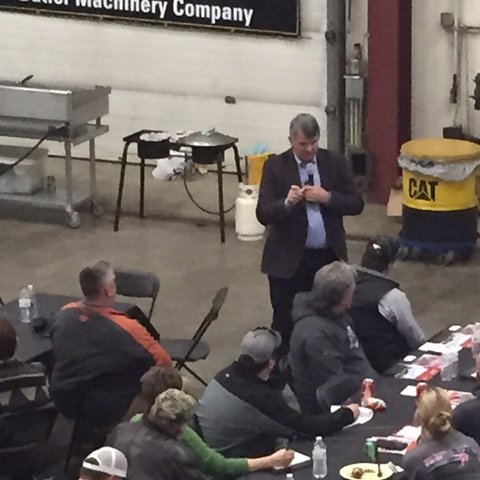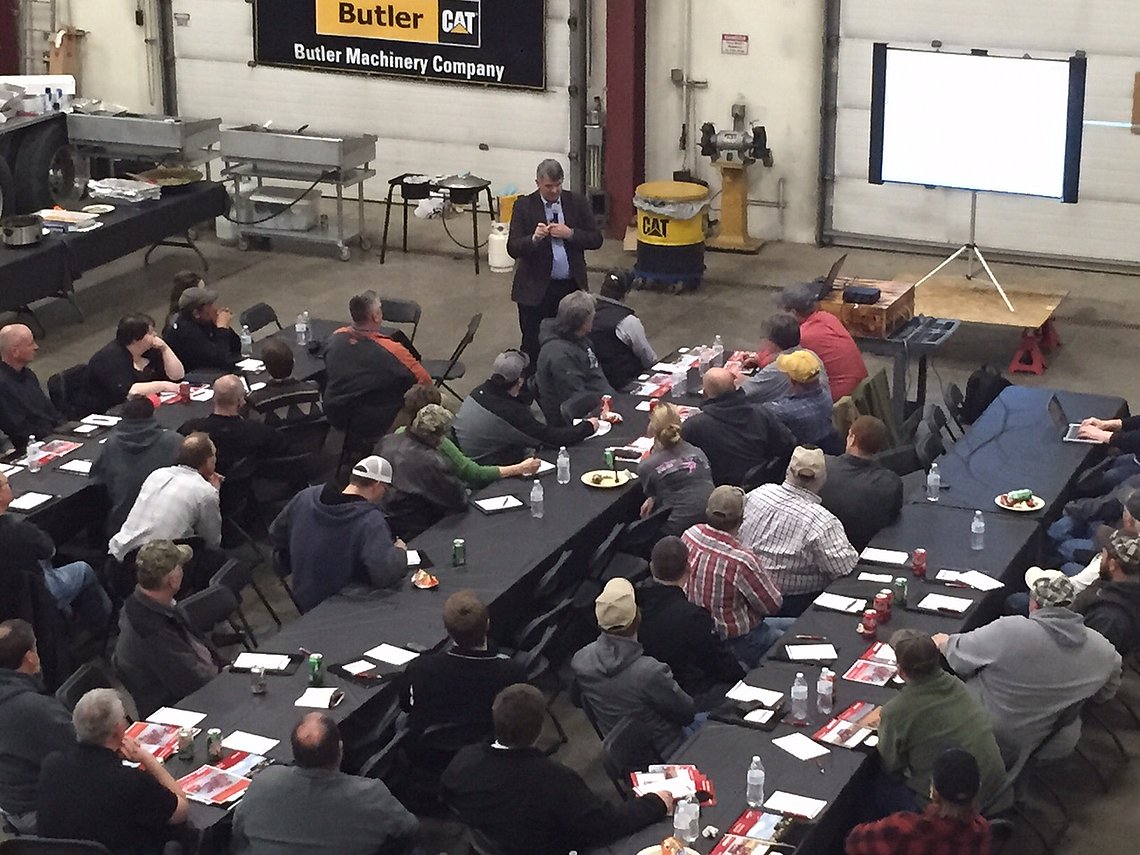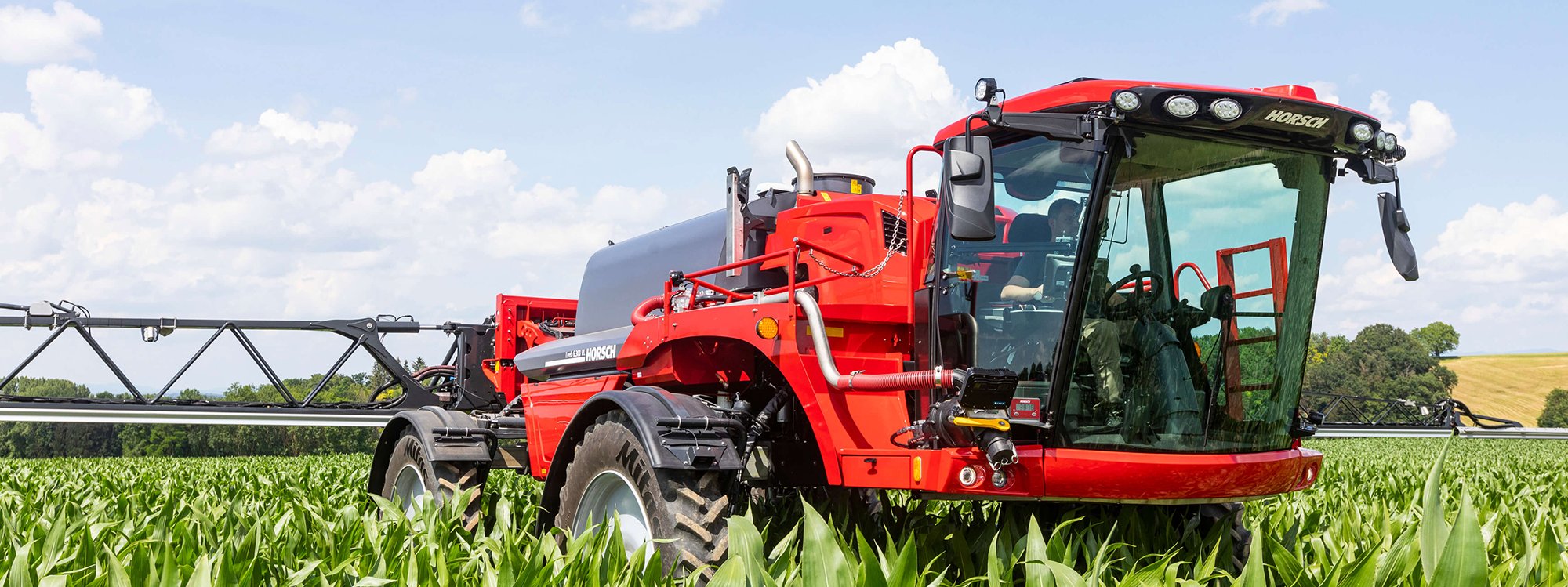Horsch: Non-GMO and traceability big issues in farming

Michael Horsch, managing director of Horsch Maschinen GmbH, was at Butler Machinery in Aberdeen on March 9.
He outlined some trends that are currently sweeping Europe, including a rapidly increasing demand for non-genetically modified organism crops with 100 percent traceability.
Horsch said the consumer demand for these crops is moving much faster than actual legislation.
European supermarkets have already drawn up new requirements for produce and plan to be totally converted over to only non-GMO by 2020, Horsch said.
Whole chains, from seed to shelves, in Brazil are already set up as non-GMO.
“The question is not how much more (money) we get if we do it, it’s how much less if we don’t,” Horsch said.

Technology
In order to have 100 percent traceability, the information, such as seed, planting and fertilizers used, needs to be sent off right away, Horsch said. It can’t be written down and stored in your desk.
“One hundred percent traceability doesn’t mean the file in your office that you wrote down. What you put on your PC isn’t worth a dime. Whatever you record, send it off to a big cloud. That’s worth something,” Horsch said.
Horsch admitted that the technology to ensure 100 percent traceability is still not entirely here.
“Monitors are the digital stone age. Each monitor is different, has different buttons; each monitor is a headache,” Horsch said.
But rather than trying to create a whole new device, Horsch thinks the way to go is by using the powerful technology that is already available, like iPads or smartphones, and link them with transponders and beacons.
At his test farm in Germany, Horsch has already been experimenting with how to make 100 percent traceability a reality.
Each worker on the farm has an iPad that they must take with them where ever they go, and the farm has beacons and transponders throughout it.
The iPads are then able to track data, such as how much chemical is left in the sprayer, and predict when and where it would be most cost effective to fill it up or unload.
At the same time that it is collecting this data, the iPads also send it to the cloud.
“It’s all prototype work. We don’t know if next year we’re going to scrap it all and try again,” Horsch said.
But he stressed that farmers will need to get on the technology train before they are unable to sell their crops.
“Even we old men have to get adjusted to this,” Horsch said. “Not just the young men.”
Prices
Another concern Horsch addressed was grain prices.
“The good news is you can’t predict weather. The bad news is you can’t predict weather,” he said.
The economy doesn’t have a big impact on grain prices; weather is 80 percent of the grain price, he said.
“In six months, we could be way up to where we were or down further,” he said.
Warm winters are allowing more growing time, which means more grain can be produced in the main grain belt, between 33 and 55 degrees latitude.
An influx of grain, be it wheat or corn, can make the market dive, he said.
But there’s no guarantee this nice weather keeps up, he said.
To emphasize his point, Horsch referenced the changes in the last 500 weeks in the wheat market.
“There were several big rallies; (500 weeks ago) it was sitting worse than it is now,” Horsch said. “The digital world will change us again in the next 500 weeks.”
Resistances
In addition to potential restrictions on certain chemicals and genetic modification, mother nature is imposing her own limitations.
Horsch said they have seen a large increase in the amount of chemical resistance, both in plants and fungi.
“Europe faces weed resistances we’ve never ever seen before,” Horsch said. “We’re running into resistances the chemical companies have no solutions for.”
The issue stems from the decline in the variety of crops that are cycled through.
“What we have done altogether in the last 25 years is we took out diversity. (Mother nature) wants it back. If we don’t give it back, she’ll find a way to take it back,” Horsch said.
Horsch said they have been working on ways to combat resistances since chemicals aren’t always effective.
For wheat, they have developed a singulator system that regulates how many and how often seeds are placed into the soil.
The system will place wheat seeds into the soil an inch and a half apart, Horsch said. “Less than an inch, they have negative interaction; over an inch and a half, the plants get lazy.”
This allows the plant to grow stronger and healthier because each plant has its own root system that isn’t being shared with side shoots.
At an inch and a half apart, the plants’ canopy makes it hard for weeds to grow, and since they are heathy, they are more resistant to fungi.
“When the heat wave comes, they can stand a lot more heat and fill in the heads,” Horsch said.
Other benefits include using less seed and needing less water.
Throughout the lecture, Horsch stressed the need for technology in farming. “You don’t have to get on board today ... but tomorrow ...” he said. “We can’t go on like this. We’ve got to completely change this.”
